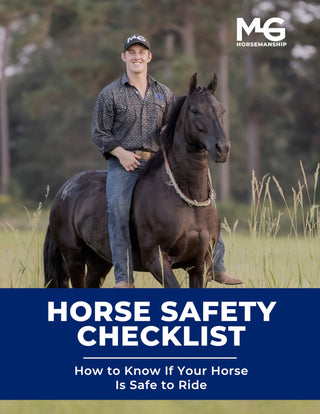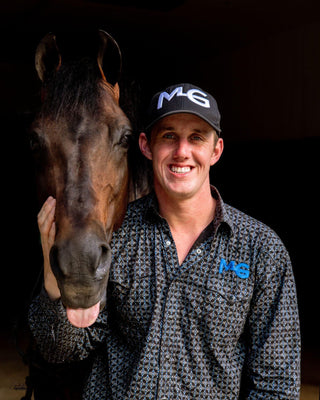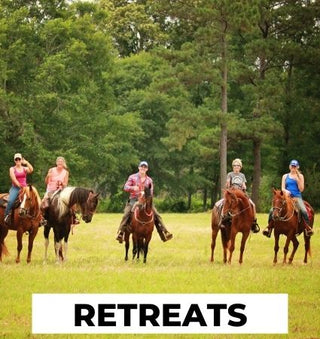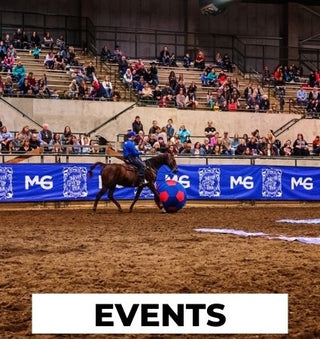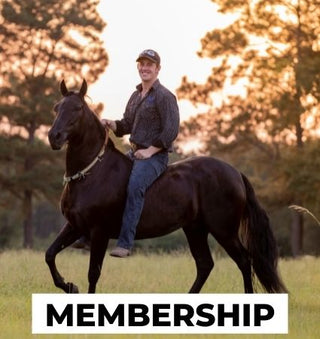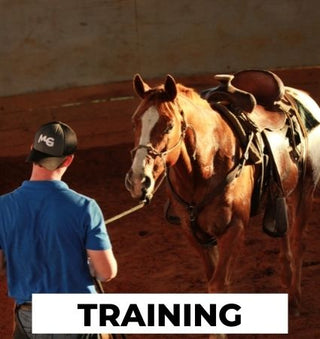Watch the Video Here or continue reading below!
Training a horse to move with precision, balance, and responsiveness requires a deep understanding of their natural instincts and body mechanics. In this session, we explore the concept of moving towards the void and away from pressure, a training technique that helps horses develop smooth movement and better control. Using a Devil’s Garden Mustang named Larry, we focus on refining his ability to respond to subtle cues, ensuring a relaxed yet responsive ride.
Understanding "To the Void, Away from Pressure"
The idea behind this training method is simple: when both legs and reins are in contact with the horse, they should move forward in a straight line. When turning, we remove one leg and rein, creating an "open door" for the horse to move through. This encourages the horse to naturally seek the void and move away from pressure without resistance.
Applying the Technique
- Straight Movement: When both legs and reins are touching the horse, they should maintain a straight line at a steady pace.
- Turning with Intention: To turn left, remove the left leg and rein while keeping the right side engaged. This signals the horse to seek the open space and turn smoothly.
- Encouraging Responsiveness: If the horse hesitates, lightly bump the outside leg or rein to reinforce the direction.
The Importance of Rider Positioning
Rider posture plays a crucial role in how a horse responds. Here are key positioning tips:
- Sit Deep and Back: By sitting over the horse’s haunches, their shoulders will elevate, leading to better balance.
- Encourage a Relaxed Head Position: A horse with a relaxed head and neck moves more fluidly, making transitions smoother.
- Maintain a Loose Rein: Unless correction is needed, allow the horse to move freely on a loose rein for a more natural gait.
Developing Comfort and Confidence in Movement
For young or inexperienced horses, it's essential to let them move at a higher speed to build their confidence. This phase allows them to:
- Learn how to carry themselves comfortably at different speeds.
- Develop muscle memory for forward motion.
- Understand that moving at a high rate of speed does not mean losing control.
Using Circles to Control Speed
If speed becomes a concern, using circles can help manage it. By directing the horse into a circle, they naturally slow down while maintaining forward motion, preventing panic or resistance.
Overcoming Common Training Challenges
Some horses may feel like they are "stuck" or moving with an "emergency brake" on. If a horse struggles to move freely, allow them to breeze at a high speed on a loose rein. This method:
- Builds trust between horse and rider.
- Prevents unnecessary micromanagement.
- Helps the horse understand that even at a full gallop, control is maintained.
Refining Precision and Control
By consistently reinforcing the void-and-pressure concept, the horse becomes highly responsive. Over time:
- The horse will anticipate directional cues with minimal rein and leg pressure.
- They will maintain straightness when both reins and legs are engaged.
- They will turn seamlessly the moment a rein and leg are removed.
The Long-Term Benefits
This technique lays the foundation for advanced riding, including bridleless work. As the horse becomes attuned to slight shifts in the rider's posture and leg position, they can execute precise movements at any speed with minimal guidance.
Final Thoughts
Training a horse using Towards the Void – Away from Pressure is an effective way to build confidence, responsiveness, and ease of movement. By allowing the horse to move freely while using subtle cues, they become more balanced and relaxed under saddle.
Try this technique with your horse and see the improvements in their movement and responsiveness. Let us know how it works for you! Stay tuned for more training insights in the next session.


